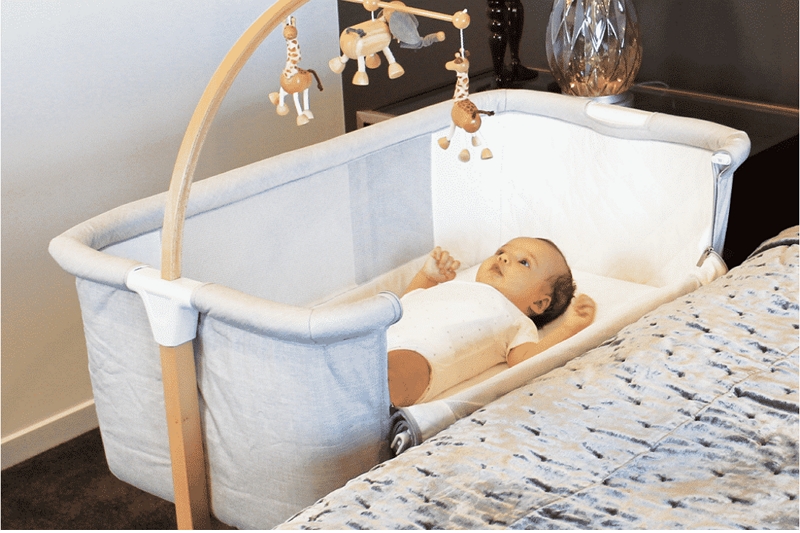Baby bassinet helps your little one feel comfortable. However, sometimes the liners get old and need to be replaced. Read our how to replace baby bassinet liner to learn more.

Steps on How to Replace Baby Bassinet Liner
Step 1. Remove the old liner from its fabric. Determine if your new bassinet has a removable bottom or not because this will determine how you should proceed to remove it.
Step 2. If there is no removable bottom, then simply cut out a large section of the lining and place it over the top rim of the baby crib before replacing it into its original position to prevent any damage while removing pieces that are attached directly to the frame itself.
Step 3. Make sure that both sides have been completely sealed so as not to allow moisture inside where mold can form easily.
If there happens to be a removable design floating on top which sits atop metal support beams, start by pulling up gently along each side until one corner slips past them without causing any damage. Use a pair of pliers to reach the underside where there is less space and grasp firmly along its length until it can be lifted out, taking care not to bend any support beams in the process if possible.
Step 4. If removing fabric pieces from either side or cutting down into a metal frame with sharp edges then use heavy-duty gloves for protection as well as safety goggles which will prevent dust particles from getting inside your eyes while cutting through tough material such as plastic, wood or even steel itself!
In addition to this, also make sure that both sides have been completely sealed so as not to allow moisture inside where mold can form easily by using caulk all-around before reinstalling them back onto their position. If there happen to be any areas where the caulk was not applied properly, this is a great time to fill them up with more of it before installing back onto its position again.
If you are wanting to remove fabric pieces from either side then make sure that they have been completely sealed using caulk all around so as not to allow moisture inside where mold can form easily. If there happen to be any areas where the caulk was not applied properly, this is a great time to fill them up with more of it before removing them back off of their original position.
Also, if support beams are included in the process then make sure that these have also been removed or cut down into smaller sections so as not to overpower your new fitted sheet which will go on top afterwards.
Steps on how to tie bassinet canopy ties to your bed
Tie the first set of ties at about 16 inches from either end. Make sure you tie them tightly, but not too tight. It will make it easier for you if someone else helps hold up one side while you do the other.
Next, bring both ends together and then cross over each other twice before tying a knot to secure the strings well. The more knots there are, the better because that’s what keeps everything sturdy.
Do this on all four corners so that they’re evenly tied down with storage pockets to keep diapers close by during diaper changes or feedings without having to crawl under the baby whenever he or she needs changing or feeding unlike when using a co-sleeping bassinet where parents need to constantly wake up to tend the baby.
Steps on How to Know if Your Bassinet is Too Soft
Step one, press down on the top of the bassinet to see how easily it sinks.
If you can’t feel anything firm even after pressing for a while, then chances are your baby’s head will not be properly supported.
Step two, check if there is enough padding around the edges that help support and protect your child from hitting his or her head against hard parts of the bassinet edge when they turn in their sleep.
If there isn’t enough cushioning around the edges, a soft mattress can cause suffocation risk by putting pressure on a small body part such as the nose or mouth which may lead to SIDS death.
Steps on How to Elevate Baby’s Head in Bassinet
Check if there is enough padding around the edges that help support and protect your child from hitting his or her head against hard parts of the bassinet edge when they turn in their sleep. Make sure it doesn’t sink easily.
If you can’t feel anything firm even after pressing for a while, then chances are your baby’s head will not be properly supported. Make sure to give yourself adequate space between the crib mattress and the top side of the bassinet frame so that the whole weight isn’t resting on one point over a small body part such as the nose or mouth which may lead to SIDS death.
Do these steps before using any type of full-size fabric bedding whether removable or nonremovable.
It is best to put your little one on top of the bassinet mattress. This way you can see for yourself if there are any dips, uneven surfaces or creases which might be uncomfortable when lying flat out. Check whether it rocks smoothly without too much effort and makes no squeaking sounds while doing so.
Make sure that under-bed clearance isn’t higher than what’s mentioned in manufacturer specifications since they have done their research thoroughly before designing this product. The weight capacity needs to match up with the baby’s size otherwise he won’t be able to use it until after being fully grown into an adult!
